How to produce a soft-ground etching
At the moment I’m teaching on one of our IELTS courses so I'm thinking in an ‘IELTS’ way. For example, in Task 1 of the writing test students may have to describe a process. I do an evening class in printing and etching and I’ve written up the instructions to one of the printing techniques that we’ve looked at; producing a soft-ground etching. The picture this week shows one of the traditional printing presses that we use in my class!
The only difference between my answer and an IELTS exam answer is that I haven’t based my response on a diagram and a question. Also, my answer is almost twice as long as a Task 2 response needs to be – that’s because there are lots of stages in the process and I wanted to explain them to you! Notice the grammar – to describe a process we generally use the present simple passive.
How to produce a soft-ground etching
First of all, the printing plate is beveled and the plastic removed. After the plate has been prepared in this way it must be degreased using liquid ammonia sprinkled with chalk powder. This is then rubbed off with a clean cloth or paper towel and the plate is washed and dried.
The next stage is to prepare the soft-ground wax. Basically the plate is placed on a hot plate, soft wax is melted onto the hot plate and then a roller is used to spread the wax thinly and evenly across the plate. The plate is then left to cool.
After the plate has cooled the drawing is prepared by placing the plate in a thin paper cover and drawing directly onto this paper.
The fourth step in the process is to etch the plate, a chemical process which involves placing it in nitric acid. Protective gloves and face wear should be worn during this part of the process. The longer the plate is left in the acid bath the deeper the lines will be etched but two to three minutes is usual.
The plate is then washed and the process can be repeated if further details are required.
In order to produce the print, the clean, etched plate is then inked all over and any surplus ink removed using a clean cloth so that only the etched lines of the drawing remain inked. The print is produced by placing the plate on top of tissue paper and underneath suitable printing paper and running it through a traditional printing press.
Finally, after the print has been produced, all of the ink can be removed from the plate using a substance such as white spirit, and it can be reinked and printed from as many times as required.
Glossary
to bevel - (n.) to angle the edges of an object such as a mirror or a piece of metal
to sprinkle - (n.) to lightly cover something with powder or liquid or small pieces of a substance
evenly - (adj.) flatly and smoothly
to etch - (n.) to create lines on metal using tools or acid
surplus - (adj.) extra, unnecessary
Post your questions and comments:
Why study at The London School of English?
- Rated “Excellent” in over 450 independent client reviews
Over 100 years’ experience
Tailored training delivers clear results
Memorable experiences in London, Canterbury or online









